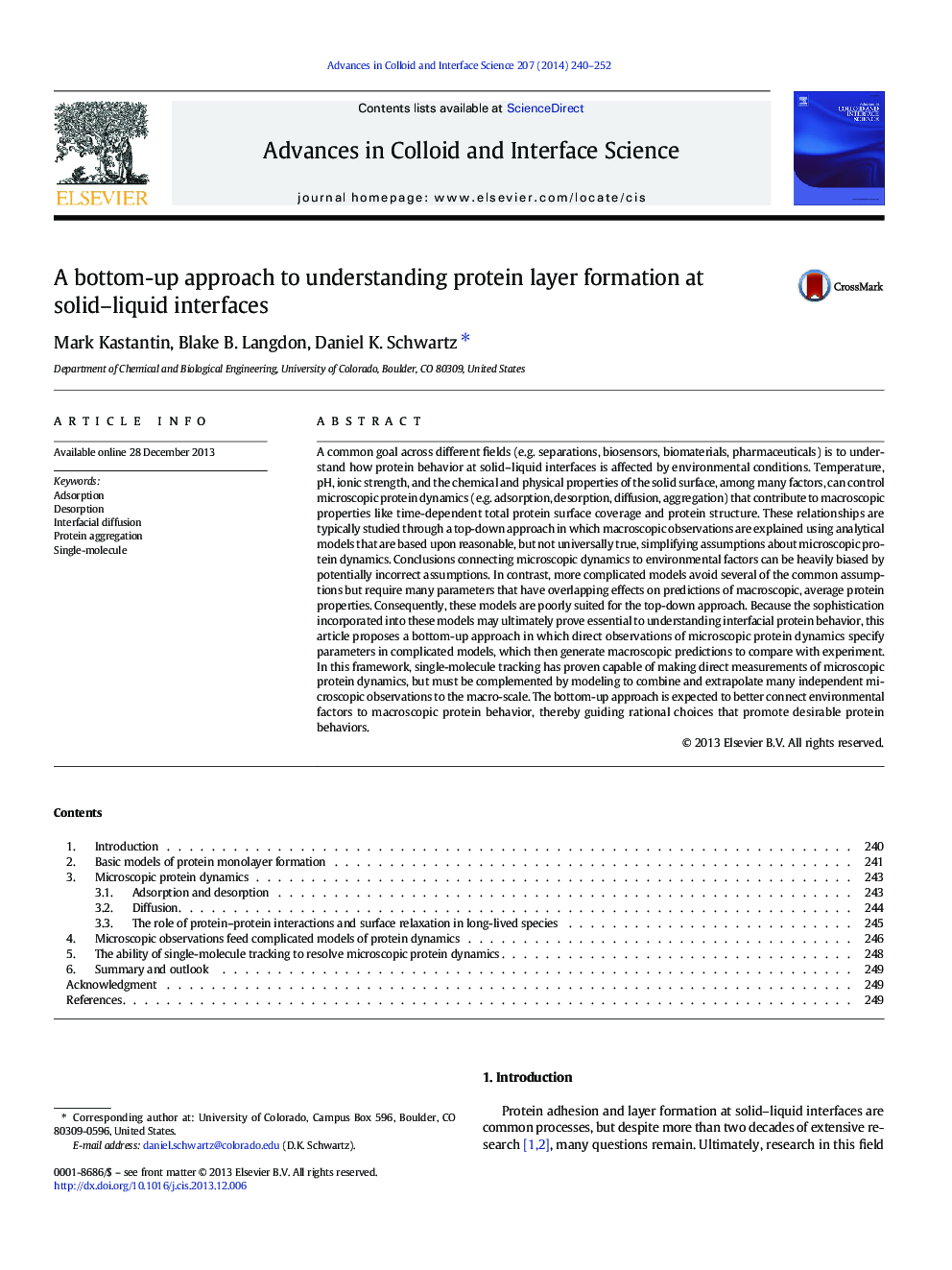| کد مقاله | کد نشریه | سال انتشار | مقاله انگلیسی | نسخه تمام متن |
|---|---|---|---|---|
| 590806 | 1453556 | 2014 | 13 صفحه PDF | دانلود رایگان |

• It is desirable to control interfacial protein dynamics using environmental factors.
• Simple models of this process make assumptions that may lead to flawed conclusions.
• More realistic models contain many unknown parameters with overlapping effects.
• Single-molecule tracking makes direct observations of microscopic protein dynamics.
• Bottom-up models combine microscopic observations to make macroscopic predictions.
A common goal across different fields (e.g. separations, biosensors, biomaterials, pharmaceuticals) is to understand how protein behavior at solid–liquid interfaces is affected by environmental conditions. Temperature, pH, ionic strength, and the chemical and physical properties of the solid surface, among many factors, can control microscopic protein dynamics (e.g. adsorption, desorption, diffusion, aggregation) that contribute to macroscopic properties like time-dependent total protein surface coverage and protein structure. These relationships are typically studied through a top-down approach in which macroscopic observations are explained using analytical models that are based upon reasonable, but not universally true, simplifying assumptions about microscopic protein dynamics. Conclusions connecting microscopic dynamics to environmental factors can be heavily biased by potentially incorrect assumptions. In contrast, more complicated models avoid several of the common assumptions but require many parameters that have overlapping effects on predictions of macroscopic, average protein properties. Consequently, these models are poorly suited for the top-down approach. Because the sophistication incorporated into these models may ultimately prove essential to understanding interfacial protein behavior, this article proposes a bottom-up approach in which direct observations of microscopic protein dynamics specify parameters in complicated models, which then generate macroscopic predictions to compare with experiment. In this framework, single-molecule tracking has proven capable of making direct measurements of microscopic protein dynamics, but must be complemented by modeling to combine and extrapolate many independent microscopic observations to the macro-scale. The bottom-up approach is expected to better connect environmental factors to macroscopic protein behavior, thereby guiding rational choices that promote desirable protein behaviors.
Figure optionsDownload as PowerPoint slide
Journal: Advances in Colloid and Interface Science - Volume 207, May 2014, Pages 240–252